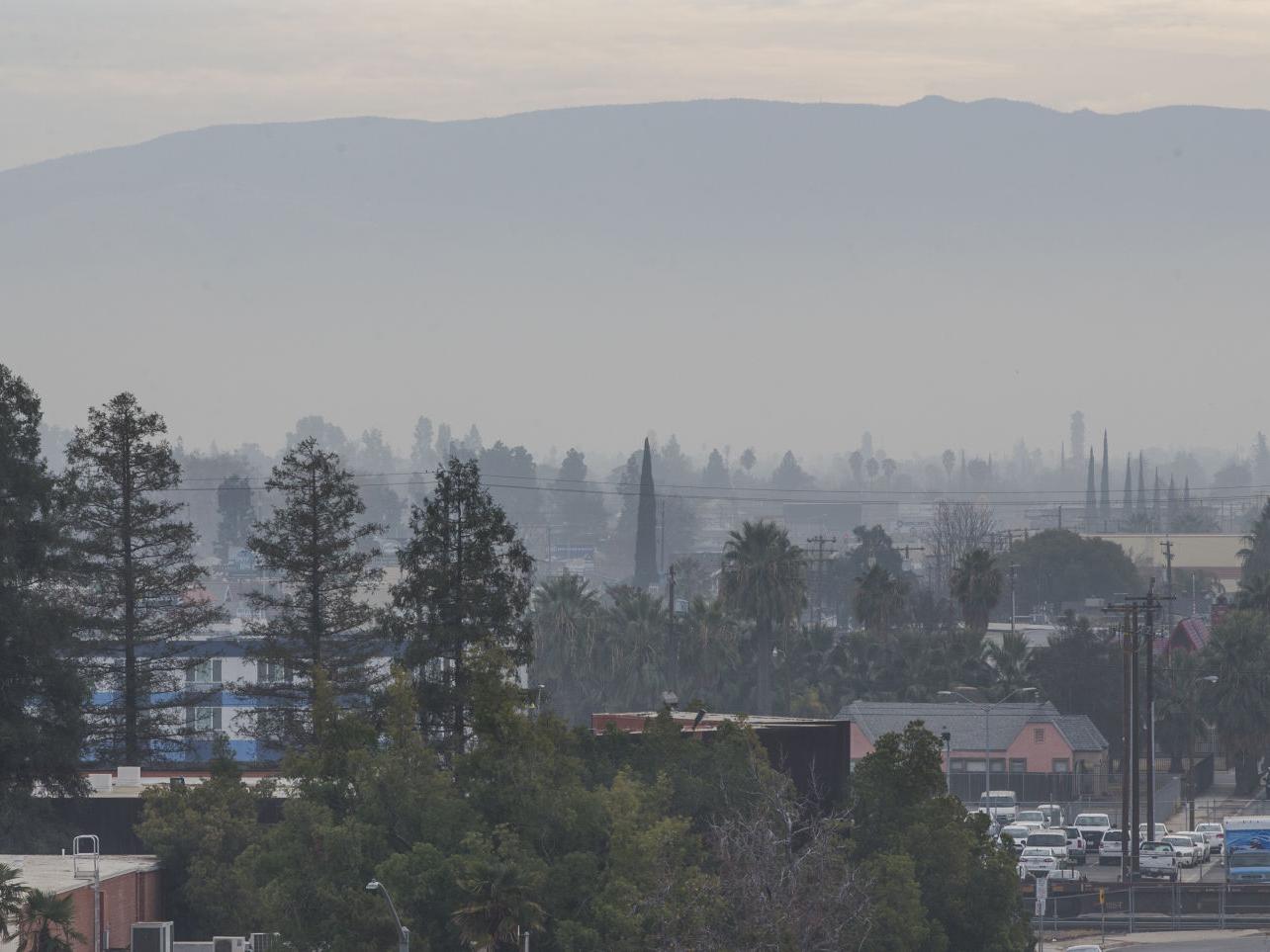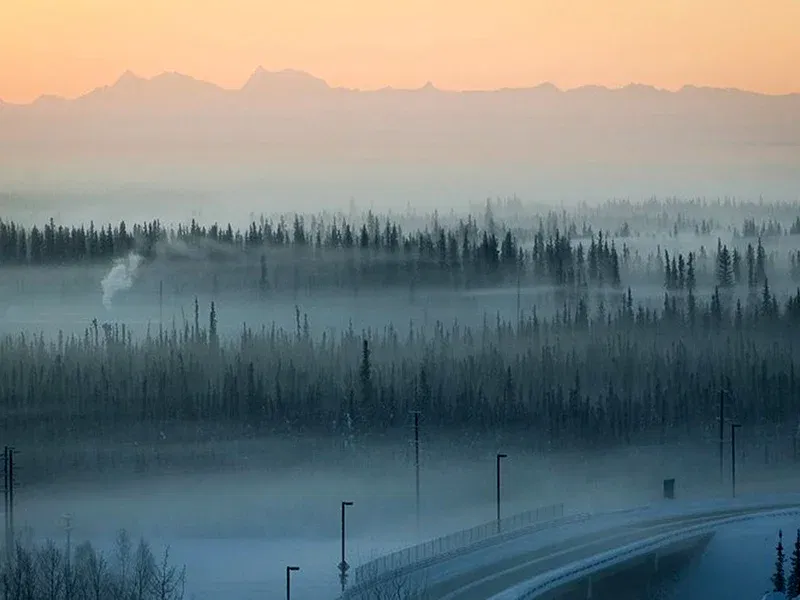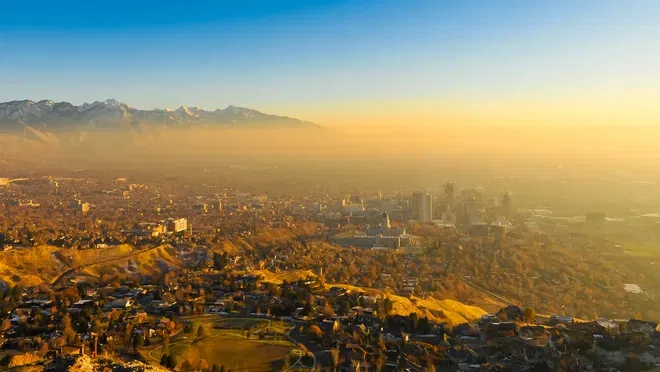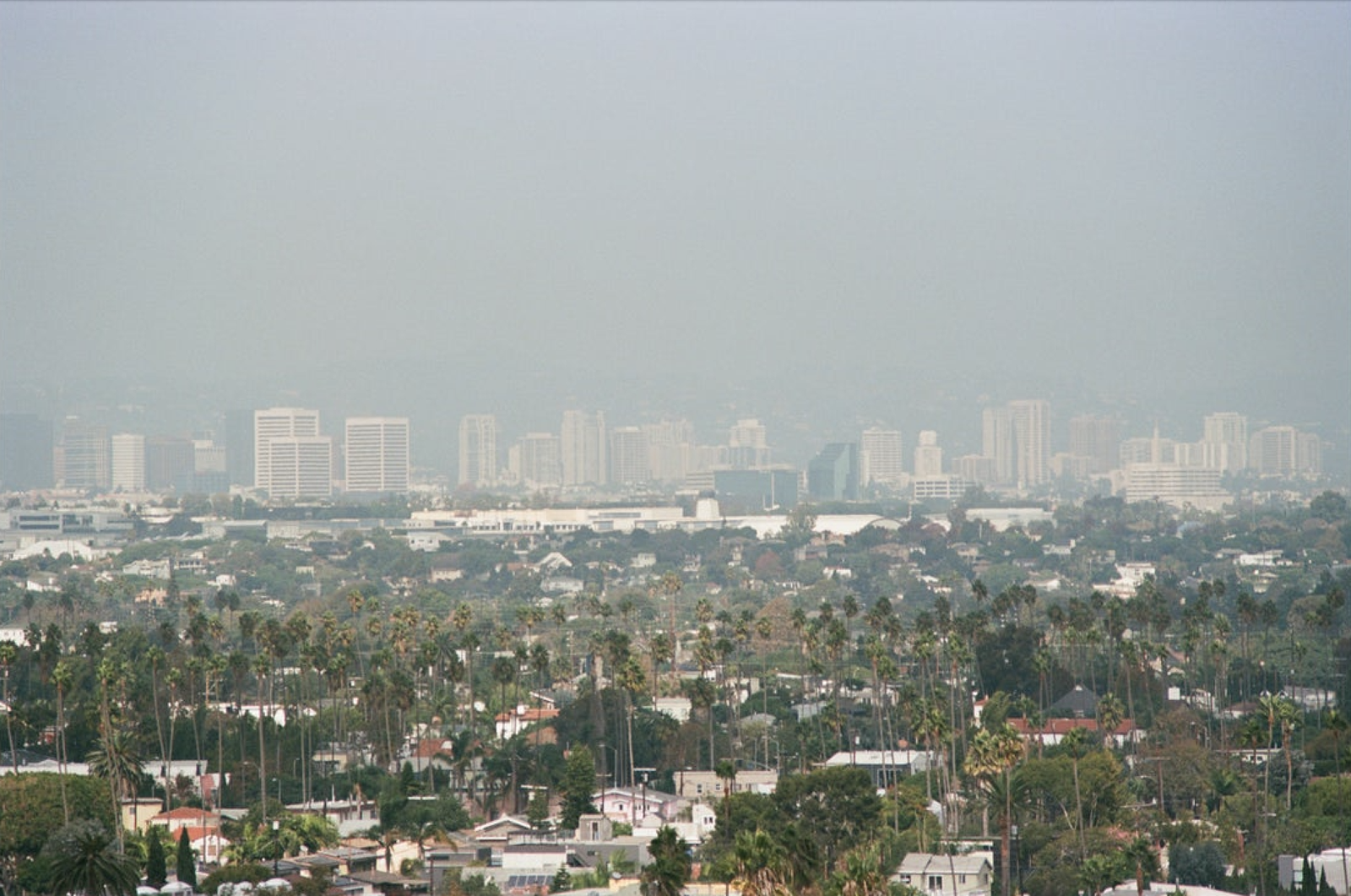Exploring the most polluted cities in the US


· 10 min read
This article is part of an educational series to spread free & quality sustainability knowledge for all.
The United States, known for its vast landscapes, iconic cities, and technological advancements, grapples with a pressing issue that threatens its environmental integrity and public health. Pollution, in its various insidious forms, casts a dark cloud over several urban centers, impacting the lives of millions of Americans. As industrialization, population growth, and urbanization continue to reshape the nation, the urgency to confront the consequences of human activity on the environment has become ever more apparent.
This article delves into the disconcerting reality of the most polluted cities in the United States. Through a comprehensive exploration of environmental factors, contributing industries, and their far-reaching implications, we aim to shed light on the severity of the situation and the need for immediate action. By understanding the challenges faced by these cities, we can work towards sustainable solutions that not only restore the vitality of our ecosystems but also safeguard the well-being of the people who call these places home.
According to the United States Environmental Protection Agency, more than 65 million tons of pollution were emitted into the atmosphere in the United States in 2021. Air pollution is a significant environmental issue that poses a threat to public health and the overall well-being of communities across the United States. It encompasses the presence of harmful substances and pollutants in the air, which can have adverse effects on human health, ecosystems, and the quality of life.
According to the State of the Air Report of the American Lung Association, nearly 36% of Americans still live in places with failing grades for unhealthy ozone or particle pollution levels. The air quality data report shows a widening disparity between air quality in eastern and western states, particularly for particle pollution.
Multiple factors contribute to the pollution of air in the United States. One of the primary causes is the combustion of fossil fuels, including coal, oil, and natural gas, which releases pollutants such as nitrogen oxides (NOx), sulfur oxides (SOx), and particulate matter (PM) into the atmosphere. Industries, power plants, and residential heating are major sources of these emissions.
Additionally, vehicle emissions play a significant role in air pollution, particularly in urban areas with high traffic congestion. The combustion of gasoline and diesel fuels releases pollutants like carbon monoxide (CO), nitrogen dioxide (NO2), volatile organic compounds (VOCs), and fine particulate matter (PM 2.5) into the air. Construction activities, agricultural practices, and certain industrial processes also contribute to pollution by releasing dust, chemicals, and pollutants.
Exposure to polluted air can have severe consequences for human health. Fine particulate matter, known as PM 2.5, and ground-level ozone (O3) are two major pollutants of concern. PM 2.5 consists of microscopic particles that can penetrate deep into the respiratory system, leading to respiratory issues, cardiovascular problems, and even premature death in people with heart or lung disease. Ozone, when inhaled, can cause respiratory irritation, worsen asthma and other respiratory conditions, and impair lung function.
Long-term air pollution exposure has been linked to various health problems, including respiratory diseases, cardiovascular diseases, lung cancer, and developmental issues in children. Certain groups, such as children, the elderly, and individuals with pre-existing respiratory or cardiovascular conditions, are particularly vulnerable to the adverse effects of air pollution.
Air pollution not only affects human health but also has significant environmental consequences. Acid rain, a result of air pollution, can damage forests, lakes, and aquatic ecosystems, leading to biodiversity loss and habitat destruction. Pollutants in the air can deposit onto soil and water, contaminating them and disrupting delicate ecological balances.
Air pollution also contributes to climate change by increasing greenhouse gas emissions. The release of carbon dioxide (CO2) and other greenhouse gases from burning fossil fuels contributes to global warming and the alteration of weather patterns, leading to more frequent and severe heatwaves, droughts, and extreme weather events.
The United States has implemented various measures to mitigate air pollution and improve air quality. The Clean Air Act, established in 1970 and amended in subsequent years, sets national air quality standards and regulates emissions from industries, vehicles, and other pollution sources. The Environmental Protection Agency (EPA) plays a crucial role in monitoring air quality, enforcing regulations, and working with states and local communities to develop strategies for pollution reduction.
Technological advancements, such as the development of cleaner energy sources, stricter vehicle emissions standards, and the promotion of renewable energy, have helped in reducing air pollution. The increased adoption of electric vehicles, the use of cleaner fuels, and the implementation of emission control technologies in industries have all contributed to improving air quality.
The EPA, for instance, focuses on strengthening the health-based yearly industrial fine soot particles standard from 12 micrograms per cubic meter to a level between 9 and 10 micrograms per cubic meter. In addition to policies like this, public awareness and individual actions also significantly reduce air pollution. Energy conservation, adopting sustainable transportation options, promoting green practices, and supporting policies that prioritize clean air are important steps individuals can take to contribute to a healthier environment.
Below is our list of the top five most polluted cities in the US. The criteria used to pick these cities include ozone and air particle pollution.

It is unsurprising that a city in California takes the crown of the most polluted city in the United States. The state often has many representatives on the list of the most polluted US cities. Study shows that exposure to particulate matter air pollution caused over 3,000 deaths and almost 5,500 new childhood asthma cases across the California Bay Area. It is unsurprising that several Californian cities make the cut as cities with the worst air quality.
Ozone pollution in the Los Angeles-Long Beach metropolitan area has been a longstanding concern and a significant environmental challenge. The region has consistently ranked among the most polluted areas in terms of high ozone days. Ozone, a colorless gas, forms when nitrogen oxides (NOx) and volatile organic compounds (VOCs) react in the presence of sunlight.
Several factors contribute to the high levels of ozone pollution in the area. The Los Angeles-Long Beach region experiences a combination of geographical and meteorological conditions that exacerbate the problem. The region's topography, surrounded by mountains, traps pollutants and creates stagnant air masses, allowing ozone levels to build up.

The next polluted city on the list is also located in California. In the report released by the American Lung Association, Bakersfield ranks third worst for high ozone days out of 227 metropolitan areas. It also has the worst air quality on the basis of 24-hour particle pollution out of 223 metropolitan areas.
The unhealthy air quality in Bakersfield is caused by emissions from agriculture, industrial fine soot particles, rail freight and road traffic. The situation is further exacerbated by geographic and climatic conditions that trap dry, dirty air over the southern section of Central Valley.

Third on the list is Fairbanks, Alaska. According to the American Lung Association, Fairbanks has the third worst air quality on the basis of 24-hour particle pollution out of 223 metropolitan areas. Furthermore, it is ranked fifth worst for annual particle pollution out of 200 metropolitan areas.
The Fairbanks North Star Borough often exceeds the U.S. Environmental Protection Agency’s limits for particle pollution. A major cause of the poor air quality in Fairbanks is wood-burning stoves. Such stoves are common in the area because wood is plentiful and cheap and temperatures usually reach minus 40 degrees or colder, and heating fuel is expensive. According to the EPA, almost 40% of Fairbanks North Star Borough houses burn wood for heat. Some other pollutant sources include emissions from power plants and vehicle exhausts.

Out of 200 metropolitan areas, Visalia is the worst in terms of annual particle pollution. It is also ranked second for high ozone days out of 227 metropolitan areas. Soot from wildfires, wood-burning stoves, coal-fired power plants, and diesel engines are the major culprits for the unhealthy air quality in this area.

The Fresno-Madera-Hanford metropolitan area rounds up our list. The area is ranked fourth worst for high ozone days out of 227 metropolitan areas. Also, it is the second worst area in terms of 24-hour particle pollution out of 223 metropolitan areas. Only two areas fared worse than the Fresno-Madera-Hanford metropolitan area out of 200 metropolitan areas.
Vermont has the best quality of life in the United States. It is the least polluted state according to several sources.
Countries like Australia, Canada, Finland, Iceland, New Zealand, Sweden, and Norway are often regarded as the countries with the cleanest air. These countries generally have low population densities, strict environmental regulations, and a low level of industrialization, contributing to their relatively cleaner air quality.
The most polluted major cities in the US are in California. California faces significant air pollution challenges due to many factors, including high population density, industrial activities, vehicular emissions, geographical conditions, and meteorological patterns.
Rhode Island is widely regarded as the state with the most drinkable water.
Chad has the worst air pollution among countries. Iraq, Pakistan, Bahrain, and Bangladesh complete the top five.
In conclusion, addressing air pollution is crucial for safeguarding public health and the environment. With the help of advanced technologies such as air quality sensors, we can monitor pollution levels more effectively and implement targeted strategies to mitigate harmful impacts. By enacting stricter regulations, promoting clean energy solutions, and raising awareness, we can strive towards improving air quality and creating healthier living environments for current and future generations.
Air Quality - National Summary | US EPA. (2022, June 1). US EPA. https://www.epa.gov/air-trends/air-quality-national-summary
Bakersfield, CA | State of the Air. (n.d.). https://www.lung.org/research/sota/city-rankings/msas/bakersfield-ca#pmann
Constantino, A. K. (2022, September 24). These 7 states have the least air pollution in the U.S. CNBC. https://www.cnbc.com/2022/09/24/vermont-new-mexico-california-us-states-with-least-air-pollution.html
EPA. (n.d.). EPA Report. https://www.epa.gov/system/files/documents/2023-03/_epaoig_20230228-23-E-0012_2.pdf
Fairbanks, AK. (n.d.). https://www.lung.org/research/sota/city-rankings/msas/fairbanks-ak#pmann
Fresno-Madera-Hanford, CA. (n.d.). https://www.lung.org/research/sota/city-rankings/msas/fresno-madera-hanford-ca#ozone
Health and Environmental Effects of Particulate Matter (PM) | US EPA. (2022, August 30). US EPA. https://www.epa.gov/pm-pollution/health-and-environmental-effects-particulate-matter-pm
Key Findings | State of the Air. (n.d.). https://www.lung.org/research/sota/key-findings
Newburger, E. (2023, January 6). Biden proposes tougher limits on deadly soot pollution. CNBC. https://www.cnbc.com/2023/01/06/biden-proposes-tougher-limits-on-deadly-soot-pollution-.html
Ramirez, R. (2023, March 14). Only 13 countries and territories had ‘healthy’ air quality in 2022. CNN. https://edition.cnn.com/2023/03/14/world/air-pollution-report-2022-climate/index.html
Southerland, V., Anenberg, S. C., Harris, M., Apte, J. S., Hystad, P., Van Donkelaar, A., Martin, R. M., Beyers, M., & Roy, A. (2021). Assessing the Distribution of Air Pollution Health Risks within Cities: A Neighborhood-Scale Analysis Leveraging High-Resolution Data Sets in the Bay Area, California. Environmental Health Perspectives, 129(3). https://doi.org/10.1289/ehp7679
Summary of the Clean Air Act | US EPA. (2022, September 12). US EPA. https://www.epa.gov/laws-regulations/summary-clean-air-act
Visalia, CA. (n.d.). https://www.lung.org/research/sota/city-rankings/msas/visalia-ca#ozone
Aaron Bruckbauer

Pollution · Greenwashing
illuminem briefings

Pollution · Wellbeing
illuminem briefings

Pollution · Nature
Inside Climate News

Pollution · Nature
The Guardian

Pollution · Nature
Futurity

Carbon · Pollution